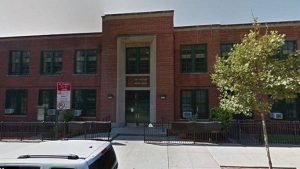Even in this day and age, NYC public schools are not in the place where they need to be. Sixty-four years ago, legislation declared segregation of schools unconstitutional in the landmark Supreme Court case, Brown v. Board of Education, and ordered integration in schools, across the nation. With a little investigation, however, one can see that even in a diverse place like NYC, there are huge disparities in which races of students sit in which classrooms, in which schools and districts. City officials like to boast of the standardized tests’ efficacy of giving every child the opportunity to be admitted to the middle and high school of their choice, based on their performance. In contrast, loop holes and regulations in the overall admissions process enable a biased education system and we can see that test scores are only one factor that is considered. Like it did six decades ago, race is still a factor that is prevalent and this directly, and indirectly, contributes to an unequal distribution of opportunities and information, which has exacerbated segregation in our schools.
There are explicit practices of discrimination that can be found within the admissions process for students applying to new schools, in NYC today. Corruption can exist among the people who carry out crucial processes and often times, insufficient checks and balances accelerate individuals to favor who receives admission into a desirable school- and who to neglect. One recent instance occurred in the 2016-2017 school year, in the affluent Bronx neighborhood, Spuyten Duyvil. Authorities say that at

least three authoritative figures, including the principal of the school in question, P.S. 24, the superintendent of the district and a staffer working for a state assemblyman, were involved in a ploy to exclude black and Latino children from attending the acclaimed Spuyten Duyvil Elementary School. While the defense argue that they obeyed the rules, it is undeniably a race struggle. Considering that nearly 25% of the population of the region are black or Hispanic, it is unacceptable that students are not given the opportunity to attend their community school, simply because prejudiced individuals wanted to get the students who were more worthy-and white- to attend, and to not be plagued and engrossed by African Americans.
While such practices do not always take place as blatantly as this case, there are also implicit discrimination practices within the process, that often escape the spotlight. Schools across the city tend to have their own criteria, but generally consider children who reside in certain neighborhoods, attended a certain quality of the school in the past and their English-speaking capabilities, among other things. Because of policies similar to these, most children from underprivileged families first start by attending their zoned school, where they receive an inadequate education, insufficient preparation for standardized tests and a bad reputation when applying to higher levels of schooling. And when it is time to transition, they are looked down upon, because of factors which they could not control and which were purposely skewed to keep certain children, in the schools in certain neighborhoods. It is a vicious and futile fate, for way too many children. In addition, there is a massive information gap that hinders certain types of people from fully immersing in the opportunities available. Schools in minority-dominated areas receive decentralized and incorrect information. Furthermore, these poor and middle working-class families are simply unable to attend information sessions and fairs because of the inconvenience of timing.
The city boasts that most students, including the disenfranchised, get admitted into their first-choice school, but the real problem lies in the fact that minorities are not given equal opportunities and resources to become knowledgeable about options, and many times, their top choice of school is really only a mediocre school. As a whole, the applications process itself can be tedious and what ends up happening is that minority students lacking a college-educated parent, are not able to maneuver their way through the process, or to locate the best options for their child.
All in all, the admissions process to enter NYC public schools are not as straightforward and seamless as portrayed. Hurdles are thrown against students, and their races are usually the deciding ingredient. Sometimes the prejudice occurs blatantly, through corrupt officials who purposely deprive certain children a just education. Other times, it takes the form of indirect bias, such as unequally educating students and parents about opportunities. At the same time, we have atrocious and inferior levels of education in African American and Hispanic-dominated schools, coupled by their parents’ lack of education, aggravating the situation even more. These all add to a cycle of despair and futility for young children of such neighborhoods. The double standards and discrimination needs to stop if we ever want this cycle to end, and only then, can the minorities be liberated and elevate themselves to reach their full potential.


















